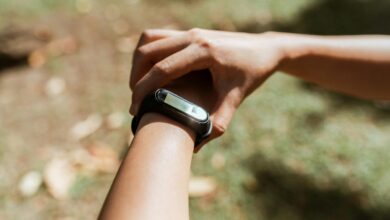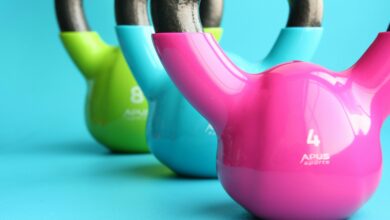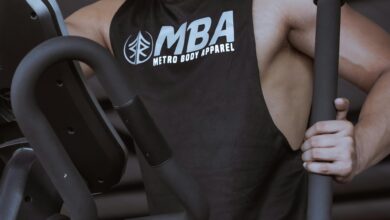How to Use a Rowing Machine for Maximum Benefits

The rowing machine, often referred to as an “ergometer” or simply “erg,” is one of the most effective pieces of cardio equipment available. It offers a full-body workout that engages multiple muscle groups, improves cardiovascular health, and burns calories efficiently. However, using a rowing machine incorrectly can lead to inefficiency or even injury. To maximize the benefits of this versatile machine, it’s essential to understand proper technique, programming, and tips for success.
In this guide, we’ll walk you through everything you need to know about using a rowing machine effectively—from mastering the stroke to structuring your workouts for optimal results.
Why Choose a Rowing Machine?
Before diving into the details, let’s explore why the rowing machine stands out among other fitness equipment:
- Full-Body Workout : Unlike treadmills or stationary bikes, rowing engages both upper and lower body muscles, including legs, core, back, arms, and shoulders.
- Low-Impact Exercise : The smooth gliding motion reduces stress on joints, making it ideal for individuals with joint pain or injuries.
- Cardiovascular and Strength Training : Rowing elevates your heart rate while simultaneously building muscular endurance and strength.
- Calorie Burn : A vigorous rowing session can burn between 400–800 calories per hour, depending on intensity and body weight.
- Versatility : Whether you’re training for endurance, fat loss, or muscle toning, the rowing machine adapts to various fitness goals.
Now that you know its benefits, let’s focus on how to use it properly.
Mastering the Rowing Stroke: The Four Phases
Proper form is crucial for maximizing efficiency and avoiding injury. Each rowing stroke consists of four distinct phases, performed in a continuous, fluid motion:
1. The Catch
- Position : Sit at the front of the machine with your knees bent, shins vertical, and arms fully extended toward the flywheel.
- Focus : Engage your core and keep your back straight (not rounded). Your shoulders should be relaxed, and your grip should be firm but not tense.
- Purpose : This is the starting position where you prepare to initiate power from your legs.
2. The Drive
- Movement : Push through your legs first, then lean back slightly with your torso as you pull the handle toward your chest.
- Sequence : Legs → Hips → Arms. Always drive with your legs before engaging your upper body.
- Focus : Maintain a strong core and avoid hunching your back. Keep your movements controlled and powerful.
3. The Finish
- Position : Lean back slightly (about 11 o’clock angle), with your legs fully extended and the handle pulled close to your lower ribs or abdomen.
- Focus : Keep your elbows tucked in, shoulders relaxed, and core engaged. Avoid pulling the handle too high, which can strain your neck and shoulders.
4. The Recovery
- Movement : Reverse the sequence: Extend your arms first, hinge forward at the hips, and finally bend your knees to return to the catch position.
- Sequence : Arms → Hips → Legs.
- Focus : Move slowly and deliberately during recovery to prepare for the next stroke. This phase should take about twice as long as the drive.
By practicing these four phases repeatedly, you’ll develop a rhythm that maximizes efficiency and minimizes fatigue.
Common Mistakes to Avoid
Even experienced users can fall into bad habits. Here are some common mistakes to watch out for:
- Relying Too Much on Arms : Remember, the majority of the power comes from your legs, not your arms. Focus on driving with your legs first.
- Rounding Your Back : Poor posture can lead to back pain or injury. Keep your spine neutral throughout the stroke.
- Pulling the Handle Too High : Pulling the handle to your chin or neck strains your shoulders. Aim for your lower ribs or abdomen instead.
- Rushing the Recovery : The recovery phase is just as important as the drive. Rushing it disrupts your rhythm and increases fatigue.
- Using Too Much Resistance : High resistance doesn’t equate to better results. Start with moderate resistance and focus on maintaining a steady pace.
Structuring Your Rowing Workouts
To get the most out of your rowing sessions, tailor your workouts to your fitness goals. Below are examples of different types of workouts:
1. Endurance Training
- Goal : Build stamina and improve cardiovascular health.
- Workout Example :
- Warm-up: 5 minutes at a light pace.
- Main Set: Row continuously for 20–30 minutes at a moderate intensity (60–70% effort).
- Cool-down: 5 minutes at a slow pace.
2. Interval Training
- Goal : Boost calorie burn and increase aerobic capacity.
- Workout Example :
- Warm-up: 5 minutes at a light pace.
- Intervals: Alternate between 1 minute of hard rowing (80–90% effort) and 2 minutes of easy rowing (50% effort). Repeat for 20 minutes.
- Cool-down: 5 minutes at a slow pace.
3. Strength and Power
- Goal : Build explosive power and muscle endurance.
- Workout Example :
- Warm-up: 5 minutes at a light pace.
- Sprints: Row as fast as possible for 30 seconds, followed by 1 minute of rest. Repeat 8–10 times.
- Cool-down: 5 minutes at a slow pace.
4. Fat Loss Circuit
- Goal : Combine rowing with bodyweight exercises for a high-intensity, fat-burning workout.
- Workout Example :
- Row 500 meters.
- Perform 15 push-ups.
- Row 400 meters.
- Perform 20 squats.
- Row 300 meters.
- Perform 10 burpees.
- Rest for 2 minutes and repeat the circuit 2–3 times.
Tips for Maximizing Your Rowing Experience
- Set Realistic Goals : Whether you’re aiming to lose weight, build endurance, or improve strength, define clear objectives to stay motivated.
- Track Your Progress : Many rowing machines display metrics like time, distance, strokes per minute (SPM), and calories burned. Use these to monitor improvements over time.
- Maintain Consistency : Incorporate rowing into your routine 2–4 times per week for noticeable results.
- Warm Up and Cool Down : Always begin with a warm-up to prepare your muscles and end with a cool-down to aid recovery.
- Adjust Resistance Wisely : Higher resistance isn’t always better. Focus on maintaining proper form and increasing intensity gradually.
Health and Safety Considerations
While rowing is generally safe, there are a few precautions to keep in mind:
- Start Slow : If you’re new to rowing, ease into it to allow your body to adapt.
- Listen to Your Body : Stop immediately if you experience sharp pain or discomfort.
- Hydrate : Stay hydrated, especially during longer sessions.
- Consult a Professional : If you have pre-existing conditions or concerns, consult a doctor or fitness expert before starting.



